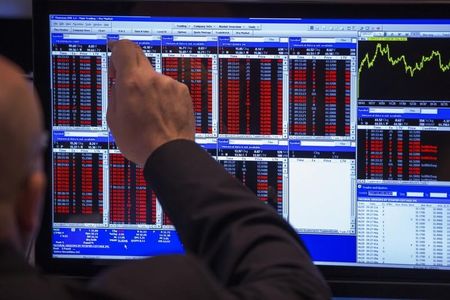Comparing the dot-com bubble with today’s market
2024.08.10 04:31

In recent months, there has been significant attention on the remarkable surge in technology stocks, particularly those linked to artificial intelligence (AI), said analysts at Wells Fargo in a note.
This trend echoes the dot-com bubble of the late 1990s, prompting many investors and analysts to draw parallels between the two periods.
By comparing the tech-heavy Nasdaq Index’s current bull-cycle performance with that of the late 1990s, we can gain insights into the similarities and differences between these two market phenomena.
The rise of transformative technologies
One of the primary similarities between the dot-com bubble and today’s market is the central role played by transformative technologies.
In the late 1990s, the internet revolutionized industries, driving substantial growth in tech stocks. Similarly, AI is currently viewed as a transformative technology with the potential to significantly enhance business efficiencies, Wells Fargo added.
Both periods saw substantial outperformance of U.S. large-cap growth stocks, particularly a handful of tech stocks associated with the internet and AI.
Performance and Valuations
The Index’s performance during the dot-com bubble from 1998 to 2000 exhibited a meteoric rise, comparable to the current bull market in AI stocks starting in the third quarter of 2022.
However, a key difference lies in the valuations. During the dot-com bubble, the cyclically adjusted price/earnings (P/E) ratios for the peaked at an unprecedented 44x, compared to the current market valuation of 35x.
Although today’s valuations are high, they are not as extreme as those witnessed during the dot-com era.
Market concentration
Another critical factor to consider is market concentration. At the height of the dot-com bubble, the top-five and top-ten stocks constituted 17% and 27% of the S&P 500 Index’s weight, respectively.
In contrast, as of the latest readings, these figures have risen to 30% and 39%. This increased concentration indicates that today’s market is even more dominated by a few large-cap stocks, primarily in the tech sector, compared to the late 1990s.
Quality of market leaders
One of the most significant differences between the two periods is the quality of the leading companies. Today’s market leaders consist of higher-quality companies with strong balance sheets and profitable operations.
In contrast, the late 1990s saw a substantial number of loss-making companies, particularly among IPOs. This fundamental difference suggests that while both periods experienced speculative excess, today’s market leaders are more robust and financially sound.
Rising skepticism and macroeconomic conditions
Despite the enthusiasm surrounding AI, there is growing skepticism about its long-term impact. Investors are increasingly concerned that AI-related capital expenditures may not translate into the anticipated revenue growth. This skepticism is reflected in recent market sell-offs following disappointing earnings from leading tech companies.
Moreover, the macroeconomic environment today differs significantly from the late 1990s. The prior period benefited from robust real GDP growth averaging around 4%, modest inflation, transitioning budget surpluses, favorable demographics, and easing Federal Reserve policies. In contrast, the current environment is marked by economic uncertainty, higher inflation, and less favorable geopolitical conditions.








